Designed for the organization of power lines with a voltage of more than 35 kV. These metal supports are the main structural element of a complex organization system. high voltage lines.
Usually power transmission towers divided into two main groups - intermediate and anchor type. In intermediate supports, the cables are fastened in supporting clamps, and in anchor-type power transmission line supports, they are fixed with tension structures. These two main types of transmission towers, in turn, are divided into many subgroups; there are also special supports that are used in non-standard conditions - for example, for transition from an overhead transmission line to an underground cable gallery.
Power transmission towers can be classified according to the following criteria:
- By appointment: intermediate supports (for straight sections of power lines), corner supports, end supports. Anchor supports are also used to cross over engineering structures or natural barriers and special supports for different conditions power lines laying.
- According to the method of fixing in the ground: the supports can be installed in the ground or on the foundation.
- By design: free-standing or mounted with braces.
- By the number of chains: single-chain, double-chain, multi-chain.
- Voltage: from 0.4 to 1150 kV.
- According to the material of manufacture: metal, reinforced concrete, wood.
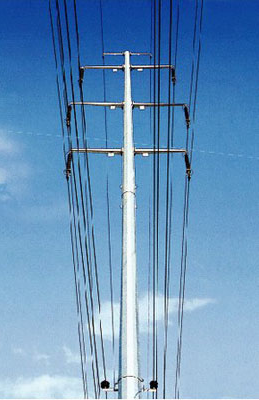
Metal supports power lines
Metal poles for power transmission lines are made from high-quality heavy-duty steel. Reinforced concrete poles, which were previously widely used as the basis of various support structures, including in the production and installation of power transmission line supports, are now increasingly being replaced metal poles of power lines. They are high-tech, highly durable, lightweight, easy to operate, install and dismantle. The threat of corrosion when using metal supports of power transmission lines is easily eliminated through the use of various modern protective coatings.
Alfa-Opora manufactures and delivers metal poles for power transmission lines to the regions of Russia and Kazakhstan. Our partners in Moscow, St. Petersburg, Nizhny Novgorod and other cities are ready to provide full assistance in receiving, processing and fulfilling an order for the manufacture of metal poles for power transmission lines in any quantity. Our offices are located at the following addresses:
- Moscow, st. Yauzskaya, 5/1. Office 207
- St. Petersburg, st. Sadovaya, 10
- Nizhny Novgorod, st. G. Lopatina, house 12/1. office 20
Production of power transmission towers
The production of power transmission towers is a complex and technologically responsible process. The reliability of power transmission and the safety of high-voltage lines for others directly depend on the reliability of supporting structures. It is important to consider many factors and have practical experience support installation. We try to keep up with modern trends and actively introduce the most advanced technologies.
The first experience in the construction of power lines using metal polyhedral supports allows us to draw the following conclusions:
- The use of multifaceted supports in the construction of power transmission lines provides a significant reduction in construction costs.
- Construction time overhead lines are reduced fold.
The listed advantages of using metal supports can reduce the cost of construction and operation of networks and other facilities by 30 - 60%. The greatest economic effect is achieved during the construction of networks in the northern and remote areas.
In large cities of Russia, such as Moscow and St. Petersburg, our power transmission towers have been installed. To purchase power transmission towers in St. Petersburg, please contact: st. Sadovaya, 10, tel.: 8 800 700 43 11. We also supply our products to the neighboring republics of Kazakhstan and Bashkortostan.
Comparative indicators of the cost of construction on supports of various types
| Index | Unit rev. | Steel multifaceted supports | Reinforced concrete supports | Metal lattice supports |
|---|---|---|---|---|
| free-standing | ||||
| MKOLEP 220-1 galv. | PB 220-1 SK26.1-6.1 | PS 220-5 galvanized. | ||
| span | m | 320 | 160 | 340 |
| Number of intermediate supports | PCS | 15 | 31 | 14 |
| Rack cost | thousand roubles. | 2 520 | 1 373 | 3 410 |
| The cost of metal structures | thousand roubles. | 540 | 771 | 0 |
| Foundation cost | thousand roubles. | 1 200 | 186 | 1 551 |
| Total intermediate supports | thousand roubles. | 4 260 | 2 330 | 4 961 |
| Quantity anchor supports | PCS. | 1 | 1 | 1 |
| The cost of anchor supports | thousand roubles. | 376 | 376 | 376 |
| Foundation cost | thousand roubles. | 111 | 111 | 111 |
| TOTAL anchor supports | thousand roubles. | 487 | 487 | 487 |
| TOTAL support costs | thousand roubles. | 4 747 | 2 817 | 5 448 |
| Railway transport costs | thousand roubles. | 90 | 235 | 303 |
| Vehicle costs | thousand roubles. | 47 | 252 | 187 |
| TOTAL supports with transport | thousand roubles. | 4884 | 3304 | 5 938 |
| Materials and equipment | thousand roubles. | 2 360 | 2 936 | 2 324 |
| Transport of materials and equipment | thousand roubles. | 104 | 162 | 100 |
| Construction and installation works | thousand roubles. | 1 405 | 2 484 | 3 767 |
| Capital construction costs | thousand roubles. | 8 753 | 8 886 | 12 129 |
| Integral discounted costs | thousand roubles. | 9 230 | 10 649 | 13 459 |
| Cost ratio by criterion | ||||
| Minimum investment | %% | 100 | 102 | 139 |
| Minimum integral cost | %% | 100 | 115 | 146 |
The construction of overhead power lines has been going on for more than 100 years. All these years, the design of supports has been continuously improved. Each stage in the development of the electric power industry put forward its own requirements for the construction of electric grids in general and for the design of supports in particular. At the first stage, power lines were built on wooden poles. Mass construction of power transmission lines on wooden supports began at the end of the 19th century. This is due to the electrification of industry. The main task that was solved at this stage was the connection of power plants with industrial areas. were small, as a rule, up to 35 kV, there was no task of networking. Under these conditions, the tasks of the stage were solved with the help of wooden single-column and U-shaped supports - the available cheap material met the requirements of the stage.
At the second stage, as the wire increased, the wire became heavier and the transition to metal supports (MPO) was carried out.
In Russia, the first line on metal supports appeared in 1925 - a double-circuit overhead line 110 kV Shatura Moscow. Since that time, a new stage in the development of the electric power industry has begun. It is characterized by the construction of large generation facilities (DneproHES, Stalingradskaya GRES, etc.), voltage increase to 154 kV (DneproHES - Donbass), 220 kV (Nizhne-Svirskaya - Leningrad) and higher. Unified energy systems of large regions are emerging, interregional high voltage transmission lines (Volzhskaya - Moscow) are being built.
 The tasks of this stage of development could not be solved on the basis of wooden supports. The mass construction of power transmission lines on metal lattice supports begins. The structures of the poles were continuously improved, the number of standard poles was expanded, and a mass transition to poles with bolted connections was made.
The tasks of this stage of development could not be solved on the basis of wooden supports. The mass construction of power transmission lines on metal lattice supports begins. The structures of the poles were continuously improved, the number of standard poles was expanded, and a mass transition to poles with bolted connections was made.
The unification of metal supports, carried out at the end of the 60s, actually determined the many designs of supports used to this day. wooden supports during this period they are also used, but their area is usually limited to voltages up to 35 kV. The third stage (since the end of the 1950s) is associated with a sharp increase in power grid construction. Each five-year period overhead lines doubled. More than 30,000 km of new transmission lines with a voltage of 35 kV and above were built annually. It was possible to ensure such a pace of construction thanks to the massive use of reinforced concrete supports(ZHBO) with prestressed racks. For 10 years (1961-1970), 130 thousand km of power lines on reinforced concrete racks were built. They became the main lines in single-circuit lines 330 and 220 kV (53% of the total length), and in lines 110 and 35 kV (single and double circuits) their share was 62 and 64%, respectively. 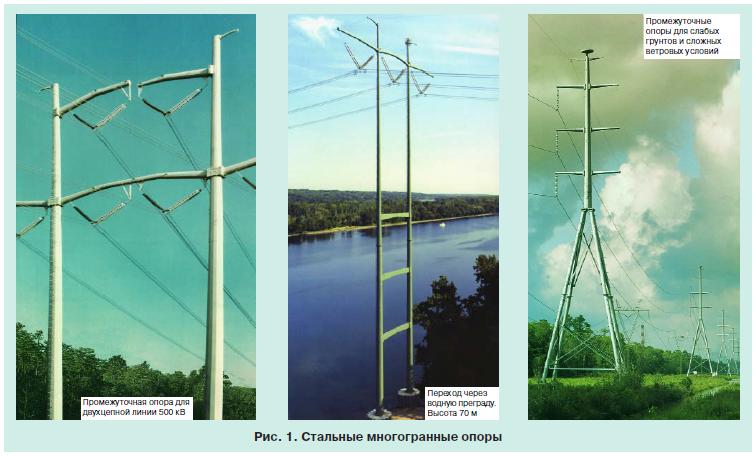
By the 70s of the last century, the main types of metal lattice and reinforced concrete supports were formed, which have remained virtually unchanged for the past 40 years. Thus, it can be argued that until 2005, all mass network construction was carried out on the scientific and technological basis of the 60-70s. The world practice of network construction was not much different from the domestic one until the mid-60s. However, in the last decades (at the third stage), our practices have diverged significantly. In the west, reinforced concrete has not received such distribution. They took the path of building lines on multifaceted supports, which successfully combine the advantages of wooden, concrete and lattice structures. In 1957, an eight-kilometer experimental section of a 115 kV transmission line was built in the USA using galvanized steel conical supports.
Thus, the world experience in the use of steel multifaceted poles (SMO) in the construction of power transmission lines has been around for 50 years. A detailed comparison was made of the economic efficiency of the construction of overhead lines using wooden, steel lattice and steel polyhedral supports. It gave the following results. The cost of building a 1 km line on polyhedral supports turned out to be 32% less than on lattice supports. Simplified and cheaper transportation, assembly and installation of supports. improved performance characteristics lines. The cost of lines on wooden supports turned out to be 40% lower than on SMO. However, it was taken into account that the service life of the SMO is 2.5 times longer, operating costs are 3 times lower, the mass is 2 times less, etc. To take into account all these factors, a comparison was made according to a criterion equivalent to our criterion of integral discounted costs, which takes into account different service lives, different current costs, and the time factor.
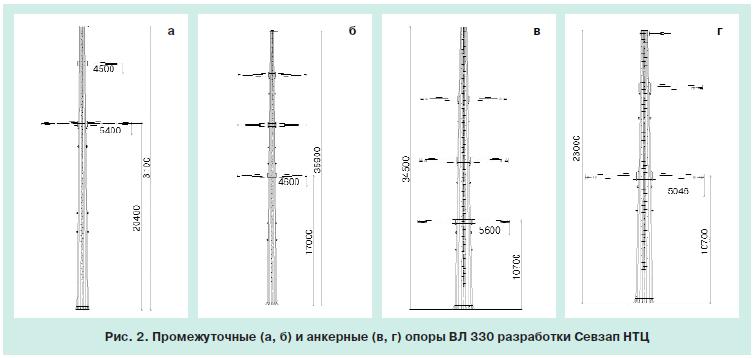 The comparison showed that the total cost per 1 km for wooden and polyhedral supports is almost the same. Other factors that cannot be directly included in the criterion were also taken into account. Final conclusion: "…comparison of galvanized steel poles with wooden poles, given the better fit to design data, fire resistance and ability not to be damaged by lightning strikes, lower repair costs, justifies the installation of galvanized steel tubular poles instead of creosote impregnated southern yellow pine poles." Let us note the fact that in the United States 50 years ago, decisions on the choice of the option for the construction of power transmission lines were made not according to one criterion, even as important as construction costs, but according to a whole group of indicators. Today in the world the main part electrical networks It is built precisely on multifaceted supports.
The comparison showed that the total cost per 1 km for wooden and polyhedral supports is almost the same. Other factors that cannot be directly included in the criterion were also taken into account. Final conclusion: "…comparison of galvanized steel poles with wooden poles, given the better fit to design data, fire resistance and ability not to be damaged by lightning strikes, lower repair costs, justifies the installation of galvanized steel tubular poles instead of creosote impregnated southern yellow pine poles." Let us note the fact that in the United States 50 years ago, decisions on the choice of the option for the construction of power transmission lines were made not according to one criterion, even as important as construction costs, but according to a whole group of indicators. Today in the world the main part electrical networks It is built precisely on multifaceted supports.
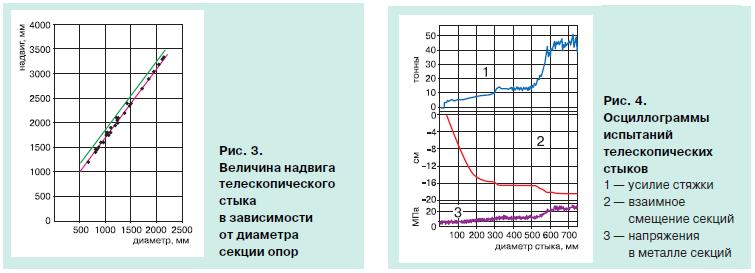 They are used both in distribution networks and in high networks as intermediate and anchor supports, as well as complex supports for river crossings, construction of power lines in cities, etc. (Fig. 1). In the 1980s, an attempt was made in Russia to introduce multifaceted supports manufactured by the Volga Steel Structures Plant into mass construction. However, the lack of necessary technologies determined the design flaws of these supports ( thin sheet, short sections, flange connections of sections, braces). This led to a situation where the local problems of a particular region (timely provision of electricity to consumers in the northern regions of the Tyumen region) were successfully resolved, but these supports did not receive mass distribution. Technical lag in this area was practically not felt until recently. There were objective reasons for this.
They are used both in distribution networks and in high networks as intermediate and anchor supports, as well as complex supports for river crossings, construction of power lines in cities, etc. (Fig. 1). In the 1980s, an attempt was made in Russia to introduce multifaceted supports manufactured by the Volga Steel Structures Plant into mass construction. However, the lack of necessary technologies determined the design flaws of these supports ( thin sheet, short sections, flange connections of sections, braces). This led to a situation where the local problems of a particular region (timely provision of electricity to consumers in the northern regions of the Tyumen region) were successfully resolved, but these supports did not receive mass distribution. Technical lag in this area was practically not felt until recently. There were objective reasons for this.
1. The state of networks at the turn of the 90s was quite satisfactory.
2. The volume of network construction, both new and reconstructed, has been at an extremely low level in the last 15 years.
3. The old norms for the design and construction of power lines were preserved.
4. There were no strict requirements for land allocation, environmental standards, aesthetics, etc.
Under these conditions, the current tasks were easily solved on the old technical basis.
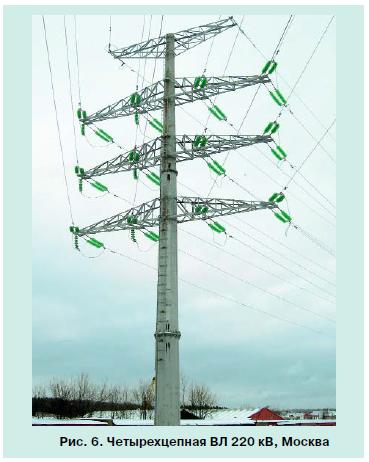 At present, the situation has changed radically in all of the above areas.
At present, the situation has changed radically in all of the above areas.
The current state of networks has changed. Over the past 15-20 years, the physical wear and tear of high-voltage networks has increased significantly (see table). In distribution networks, the situation is even more difficult. According to ROSEP specialists, without a radical upgrade on a new technical basis, distribution networks will not be able to provide a satisfactory energy supply to consumers in 8-12 years. The situation is complicated by the continuous growth of energy consumption and constant shifts in the distribution of productive forces. There is also obsolescence of equipment. Most of the objects in terms of technical level correspond to their Western counterparts of 20-30 years ago.
In the coming years, the volume of network construction will increase sharply. If in 2006 about 600 km of networks with a voltage of 220 kV and above were built, then in 2007 about 700 km will be built, in 2008 - more than 1500 km, in 2009 - more than 4200 km. The total volume of investments in network construction of FGC UES will increase from 36 billion rubles. in 2006 to 150 billion rubles. in 2009. An even more ambitious program will be implemented in the distribution networks of the holding. Investments will increase from 47 billion rubles. in 2006 to 160 billion rubles. in 2009. In subsequent years, network construction volumes will remain at the same high level.
The internal requirements have changed radically. With the introduction in 2003 of the 7th edition of the "Electrical Installation Rules", the requirements for the reliability of networks have increased dramatically. To meet the requirements of the new PUE it is necessary to reduce the span distances in power lines built on standard supports by 30-40%. This entails a corresponding increase in costs and construction time. In the process of developing the Concept for the development of high networks, new technical requirements for them were also formulated. It is planned to increase the service life up to 50 years, reduce construction time, operating costs, etc. For a number of positions, the supports of the old row do not meet the new technical requirements.
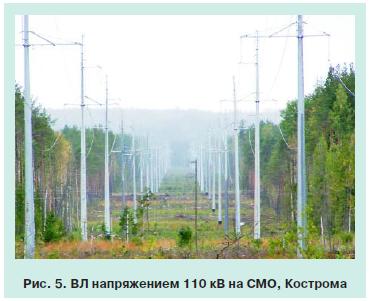 The requirements of external subsystems for energy have become much tougher. Over the past few years, environmental requirements for facilities under construction have changed radically, prices for temporary and permanent land allocation have increased significantly! It is practically impossible to build new transmission lines outside the old corridors in large cities, nature protection zones, forests of the first category, etc. Not the last place began to be occupied by aesthetics issues (especially during construction in the city). Modern stage can be called the fourth stage in network building.
The requirements of external subsystems for energy have become much tougher. Over the past few years, environmental requirements for facilities under construction have changed radically, prices for temporary and permanent land allocation have increased significantly! It is practically impossible to build new transmission lines outside the old corridors in large cities, nature protection zones, forests of the first category, etc. Not the last place began to be occupied by aesthetics issues (especially during construction in the city). Modern stage can be called the fourth stage in network building.
It is very difficult to implement the tasks of this stage on the old technical and technological basis. The requirements for a sharp reduction in the construction time for power transmission lines, a reduction in its cost, an increase in the reliability of power supply and compliance with tougher technical and technological requirements are coming to the fore. One of the directions for solving these difficult problems, in the opinion of the authors, will be the mass construction of networks using steel polyhedral supports.
In 2003, new technologies appeared in Russia that make it possible to produce polyhedral supports the most modern designs. A paradoxical situation arose when production capabilities made it possible to manufacture multifaceted supports of almost any configuration, that is, with desired properties, but these capabilities were ahead of the preparedness of power engineers in the field of designing supports, designing and building power lines based on them. There were no modern designs of multifaceted supports, taking into account new production possibilities. There was practically no experience in the design and construction of power transmission lines on multifaceted supports. There was no regulatory and technical documentation for both the design of SMOs and for the design of power lines based on them. Moreover, customers (energy systems of various levels) have an erroneous opinion that the use of multifaceted supports significantly increases the cost of building overhead lines. At present, the situation has changed radically. In 2006, JSC FGC UES started to implement the Target Program "Creation and implementation of multifaceted steel poles for 35-500 kV overhead lines." The goal of the program is “... the creation of supports based on steel multifaceted racks for 35-500 kV overhead lines with the development of a regulatory framework, design, technological documentation, design recommendations, instructions for installation, repair and operation, ensuring effective implementation PUE-7 during the construction, reconstruction and technical re-equipment of overhead lines, as well as a significant reduction in the time and cost of construction and emergency recovery work. The implementation of the program will allow consolidating the scientific and industrial potential and completely eliminating the gap that has arisen in the design and construction of power transmission lines using multifaceted supports.
The first results obtained for 2006-2007 confirm this. To date, more than 40 types of supports have been developed for 35-330 kV overhead lines, including intermediate and anchor single and double circuit for overhead lines 220-330 kV, four-circuit for 110 and 220 kV overhead lines, etc. (Fig. 2). Gaining experience in designing support structures. It should be noted that the design of polyhedral supports using modern software systems such as Solid Works is much simpler than lattice supports and takes 2-3 weeks today. There are only three main issues that need to be individually determined for each support: – the magnitude of the overthrust of the upper section onto the lower one; – screed force of sections; - design of the traverse attachment point to the support shaft.
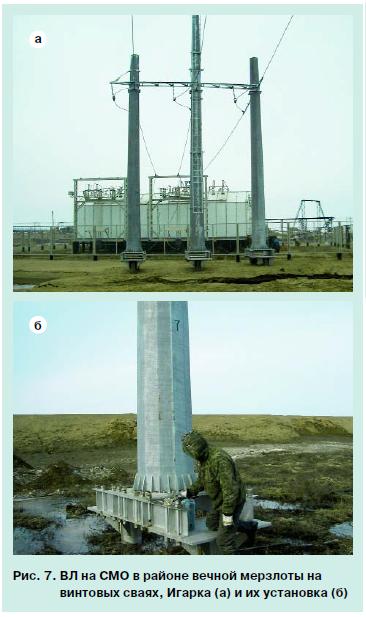 The main difference between modern multifaceted supports and those used earlier is the telescopic connection of the rack sections. It is believed that it is the telescopic joint that provides reliability and long service life, as well as high speed of mounting the supports. In order to provide these advantages of the CMO, it is necessary to determine the optimal values of two parameters of the joint - the length of the overthrust of the upper section on the lower one and the tie force of the sections. Thrust length. Over the past decades, a lot of experience has been accumulated abroad in the design of multifaceted supports, the construction and operation of overhead lines based on the SMO. A sample of several dozen joints was made.
The main difference between modern multifaceted supports and those used earlier is the telescopic connection of the rack sections. It is believed that it is the telescopic joint that provides reliability and long service life, as well as high speed of mounting the supports. In order to provide these advantages of the CMO, it is necessary to determine the optimal values of two parameters of the joint - the length of the overthrust of the upper section on the lower one and the tie force of the sections. Thrust length. Over the past decades, a lot of experience has been accumulated abroad in the design of multifaceted supports, the construction and operation of overhead lines based on the SMO. A sample of several dozen joints was made.
In order to avoid random binding to one type of support, a wide variety of representatives of telescopic joints were selected in the sample. They differed in the design of the joint - in diameters of 660-2140 mm; - in wall thickness 5-25 mm; – taper 15-37 mm/m; - by the number of faces 12-16 gr. The supports themselves differed: in height - from 18 to 55 m; by the number of sections - from 2 to 7; by type - intermediate and anchor; voltage - from 65 kV to 230 kV; by the number of circuits - from 2 to 4. The generated sample can be considered representative both in terms of the number and breadth of coverage of various joint and support structures. The results presented in fig. 3 show that this sample can be fairly accurately approximated by a linear function Y = 1.42 X + 0.2. This node is one of the most important in the support. The task is not to find the dependency that most accurately describes the sample, but to build a simple dependency that allows the designer to easily and quickly determine the required overthrust, which, moreover, will ensure sufficient joint reliability.
In the opinion of the authors, such a dependence will be a straight line, parallel to the straight line calculated according to the above formula, but shifted up to a level exceeding all sample points. This "raise" of the straight means lengthening each joint. In the case under consideration, this elongation will be 120 mm per joint. This will practically not affect the mass of the support, but will increase its reliability. Tightening force. This value affects the assembly process of the support and the composition of the mechanisms used. In order to determine the screed force, a series of tests was carried out in cooperation with Ostsheim for joints with a different number of edges, different taper, wall thickness, overthrust, etc. Detailed description results require a separate presentation. In this article, we note the following.
For joints with a diameter of 500-700 mm with a wall of 6-8 mm, it is required to tighten the sections with a force of 10-15 tons. 4 shows that for a joint with a diameter of 500 mm from a sheet of 6 mm, a force of 10 tons is sufficient. A force of 15 tons increases the thrust by only 5 mm. A further increase in the screed force to 50 tons allows you to push the upper section by another 20 mm, but this is already achieved due to plastic deformation of the sections, which is undesirable, since the reliability of the structure is reduced. This means that for the assembly of the bulk of multifaceted supports (for networks up to 220 kV, the joints are close to prototypes), the use of special mechanisms is not required, and the installation process itself is extremely simplified.
For a year and a half, sufficient experience has been accumulated in the construction of lines on multifaceted supports. To date, the construction of the first 15 overhead lines using SMOs has been built and is being completed. The lines were built in areas with a wide variety of natural and climatic conditions: Moscow and the Moscow region, Tynda, Belgorod, Igarka, Surgut, Kostroma, Kemerovo. The total length of the overhead line was about 500 km. Both simple lines with a voltage of 10-110 kV and up to two circuits (Fig. 5), as well as technically more complex ones - four-circuit 110 and 220 kV (Fig. 6) were built. Objects were built in difficult natural and climatic conditions, for example, a 110 kV overhead line in the fourth wind region on permafrost, where the installation of supports was carried out on screw piles (Fig. 7).





